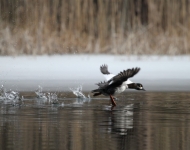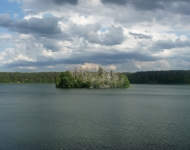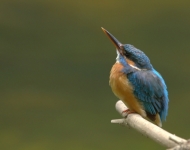Cultural value
Reaching far back into the past, the present-day area of the Drawa National Park was dominated by a forest complex, and not inhabited by people. Throughout the centuries colonization started in the areas capable of providing people with the riches of forests and waters. With time, a farm-forest landscape came into shape, one painting itself with the mosaic of woods, fields, and meadows, where the inhabitants of sparse forest settlements lived by engaging in different forest economies based on what the local nature allowed. Fish-ponds were established, and meadows with cattle and sheep pastures irrigated. Honey was being collected from bee-hives. Agriculture was being developed. From the beginning of 18th century potatoes became a mass-produced staple. In the 19th century their production encompassed for over 30% of the farmland. Over a dozen of local starch-works and alcohol distilleries were built to process the potatoes. The potato “boom” was especially visible in the neighbourhood of Kalisz Pomorski and Szczuczarz. One interesting industrial potato storage still remains in Dłusko, however dating to a later period. Aside form typical farming products hops were very popularly cultivated in the 18th and 19th century. There was a brewery in Głusko. Grape production was being tried in Drawno and Głusko.
Until the 20th century, old, traditional fishing methods were being used. Only less than two decades ago in Głusko, one could find flat-bottomed boats built with overlapping pine staves, and reinforced with strong oak timbers. Calked oars were used to push the boats out. That kind of equipment was used for the November salmon fishing, where salmon was being caught in a net dividing the river current. Spears, and even crow-bars were used to kill the fish. In 1982, in the lower Drawa, the first in the Pomorze Zachodnie (West Pomerania) fish-pass for migrating fish was built. The next one came into being in the end of the 19th century, by a dam then belonging to a tar shop, in Kamienna near Głusko. Fry stocking was being conducted since the end of the 19th century. Fish breeding was growing. First fish ponds were being established at leakages within the forests, in the simplest and primitive beadwork fashion, in Rynna Moczelska and Dolina Sucha. By the end of the century, a modern fish farm was created in Głusko.
The beginning of an intense forestry and pine promoting also date back to the 18th century. Pine was being renewed by self-seeding, and later with whole-cone seeding of completely cropped areas. The “modern, proper forestry” of systematic, exhaustive cropping of standing timber and renewing the after-crop areas with lane-based sowing of whole cones, and later with seeds only, dates back to the beginning of the 19th century. Additionally, since about 1870, seeds imported from Germany were used, which unintentionally caused introducing pine species from foreign geographic regions. As a result, by the end of the 19th century, the present state of pine-dominated forests was created. Aside from changing the genetic make-up, the crop areas were tidied up by dividing areas of different stages of development. Only in some fragments of the most fertile beech woods, mainly west of Drawa River, other methods of forestry were used. The employment of refined partial cropping and using natural re-cropping methods caused these forest parts to retain their original character. One of the most crucial problems of foresters used to be fire protection. In the first half of the 20th century a system of anti-fire observation towers was built. In summertime they would house an on-duty fire-watch. In the 1930s, there were such towers on Chłopska Góra near Jelenia, between Sitnica and Lake Ostrowieckie, in Stare Osieczno, near Lake Marta, near Kalisz Pomorski, and west of Golin. Today only their foundations remain. Another element of the old fire protection systems was non-wooded lanes of about a dozen metres wide between wooded forest parts. They were meant to arrest the fire from spreading. Now wooded with birch, they are still visible in the landscape, especially in the area between Głusko, Dominikowo, and Nowa Korytnica.
The timber gathered in the wilderness was in most part transported by river, being stacked on rollways. In the first half of the 20th century, a narrow-gauge railway was also functioning, starting in a no longer existing settlement of Dąbrowa by Drawa, vis-à-vis Moczele, and running through Sitnica and Jelenie to Krępa, where the timber was loaded onto a regular railway. In the forests, glass-works and wood distilleries were also developing.
The beginning of tourism in this area dates back to the first half of the 20th century, when “vacationing” became fashionable in Tuczno, Człopia, and Kalisz Pomorski. Hotels and tourist information sites, where the information was usually supplied by the mayor himself, were established in those places. The Łasko and Głusko areas became very popular with tourists coming from Berlin. In those sites, as well as the neighbouring Wołogoszcz and Dobiegniew, boarding houses were built. A regularly functioning bus line was established from Wygon, through Piaseczno, Moczele, Sitnica, Głusko, and Wołogoszcz to Dobiegniew. The first waterside tourists appeared at Drawa






Search
Gallery
Newsletter
Będziemy informować Cię o nowościach w serwisie oraz ważnych wydarzeniach w Parku.
Contact
ul. Leśników 2, 73-220 Drawno,
tel.: (095) 768 20 51,
(095) 768 20 52
fax: (095) 768 25 10
email: [email protected]

























